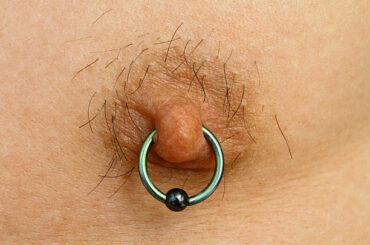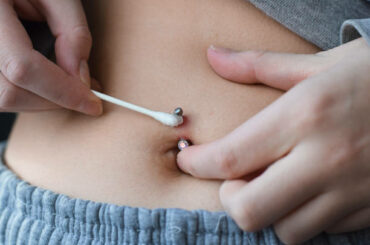Contents
When Can I Change My Nipple Piercing? – Introduction

Nipple piercings have emerged as a striking form of body adornment, offering individuals a unique and expressive canvas to showcase their personality and style. However, navigating the process of changing nipple jewelry can be a source of curiosity and concern, particularly for those with freshly pierced nipples. In this comprehensive guide, we will delve into the critical considerations and guidelines to determine when it’s safe and appropriate to change your nipple piercing jewelry.
When Can I Change My Nipple Piercing Jewelry? | UrbanBodyJewelry.com: https://m.youtube.com/watch?v=9gDXyV6J1sk&pp=ygUlV2hlbiBDYW4gSSBDaGFuZ2UgTXkgTmlwcGxlIFBpZXJjaW5nPw%3D%3D
Understanding the Healing Journey:
Before diving into the specifics of when to change your nipple piercing jewelry, it’s essential to gain a comprehensive understanding of the healing process. Nipple piercings, like all body piercings, undergo a complex healing journey as the body works to close the wound created by the piercing. Healing times can vary widely from person to person, but as a general guideline, nipple piercings typically take anywhere from 6 to 12 months to achieve full healing. During this period, the body orchestrates various processes to repair and strengthen the pierced area, making patience a virtue in the world of piercing.
The Significance of Patience:
Exercising patience when it comes to changing your nipple piercing jewelry is of paramount importance. Changing your jewelry prematurely can lead to a host of complications, including:
1. Risk of Infection: When the wound has not fully closed, introducing new jewelry can elevate the risk of infection, as the body’s natural defenses are still at work.
2. Irritation: Premature jewelry changes can irritate the healing tissue, leading to discomfort and potentially extending the healing timeline.
3. Migration and Rejection: Nipple piercings are susceptible to migration and rejection, and changing jewelry too early can exacerbate these risks.
4. Discomfort: Nipple piercings can be sensitive during the healing process, and altering the jewelry prematurely can result in pain and discomfort.
Indicators That It’s Time for a Change:
While patience is undoubtedly essential, there comes a point when changing your nipple piercing jewelry is not only safe but also necessary. Several signs may indicate that it’s time for a jewelry swap:
1. Absence of Discharge: If your nipple piercing has ceased producing discharge, and you no longer observe crusting or bleeding, this may indicate that the piercing has healed sufficiently.
2. Lack of Pain or Sensitivity: The area should no longer exhibit tenderness or sensitivity to touch. If you can touch or manipulate the jewelry without discomfort, it’s a positive sign.
3. Reduction in Swelling: Swelling is a common occurrence during the initial healing phase. When the swelling has entirely subsided, it’s a positive sign that the piercing is becoming stable.
4. Absence of Redness or Inflammation: Healthy nipple piercings generally show no signs of redness, inflammation, or unusual color changes.
The Jewelry Changing Process:
When you determine that it’s the right time to change your nipple piercing jewelry, follow these steps for a safe and smooth transition:
1. Prioritize Cleanliness: Ensure your hands are meticulously clean and thoroughly washed before handling your piercing or new jewelry.
2. Prepare the New Jewelry: Have the replacement jewelry you desire to insert ready. Ensure that it’s clean and crafted from body-safe materials like surgical steel or titanium.
3. Soak the Area: Soak your nipple in a warm saline solution for a few minutes before the jewelry change. This softens any crust that may have formed and makes the process more comfortable.
4. Gentle Removal: Carefully remove the current jewelry by unscrewing or unclasping it. Avoid any forceful or twisting motions, which can irritate the healing tissue.
5. Insert New Jewelry: Slowly and gently insert the new jewelry into the piercing. Patience is key here, so avoid any abrupt or forceful movements.
6. Secure Fastening: Ensure that the new jewelry is securely fastened but not excessively tight. It should sit comfortably and allow for a bit of movement to accommodate potential swelling.
Consult a Professional if in Doubt:
If you have any uncertainties about changing your nipple piercing jewelry or if you encounter complications during the process, it’s always advisable to consult a professional piercer or a healthcare provider. These experts can provide valuable guidance, assess the progress of healing, and assist with jewelry changes if necessary.
Changing your nipple piercing jewelry is a process that should be approached with caution, mindfulness, and, most importantly, patience. Rushing this transition can lead to complications and hinder the healing of your piercing. Keep a vigilant eye on the signs of healing, and when you believe the time is right, adhere to proper hygiene and care protocols to ensure a safe and comfortable jewelry swap. If you ever find yourself uncertain or facing challenges, don’t hesitate to seek the guidance of a professional for a smoother and more secure transition.
Conclusion
In conclusion, the decision to change your nipple piercing jewelry is an exciting step in your body modification journey, but it must be approached with patience and caution. Nipple piercings, like all body piercings, undergo a healing process that varies from person to person and typically takes several months to complete.
Signs such as the absence of discharge, lack of pain or sensitivity, reduced swelling, and the absence of redness or inflammation indicate that your nipple piercing may be ready for a change. When you decide it’s time to switch jewelry, it’s crucial to follow proper hygiene and care protocols, such as washing your hands, soaking the area, and gently inserting the new jewelry.
If you ever have doubts or experience difficulties during the process, it’s wise to seek the advice of a professional piercer or healthcare provider. They can provide guidance, assess the healing progress, and assist with jewelry changes if necessary.
Ultimately, changing your nipple piercing jewelry is a rewarding expression of your individuality and style, but it should always be done with the utmost care and consideration for your body’s healing process. By adhering to these guidelines and exercising patience, you can enjoy the aesthetic and personal satisfaction that comes with adorning your nipple piercings safely and comfortably.
More Links:
Does a Septum Piercing Close? Understanding the Dynamics of Septum Piercing Closure: https://shatattoos.com/does-a-septum-piercing-close/
Will My Nose Piercing Hole Shrink? – Understanding the Dynamics of Nose Piercing Closure: https://shatattoos.com/will-my-nose-piercing-hole-shrink/





